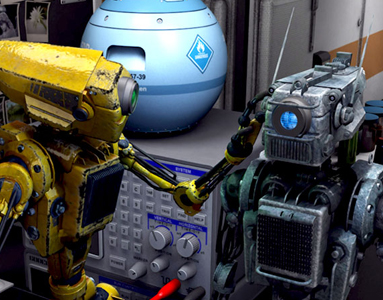Two years in the making, with most of its production done in Australia, The Lego Movie has already grossed over $400 million worldwide. A well-formed script demanded strong VFX effects and complex stop-motion techniques, and that is exactly what Animal Logic – the principal animators of the movie – delivered.
[youtube]http://www.youtube.com/watch?v=fZ_JOBCLF-I[/youtube]
One of the key elements of the movie was that it had to be made out of bricks. At any point of time, the animators wanted to be able to select, animate and interact with those bricks to bring out the real essence of the script. This is why each brick was built and animated individually by an artist. For example, when a young kid doesn’t press the Lego down completely, it’s not mathematically perfect. So the artists brought a little ‘jitter’ into the animation making it look like the Lego blocks were not stuck on properly.
The Legos had to have limited capacities to emote. But advanced software presents sophisticated tools which allow micro movements and spell-bounding artwork. With the current advances in VFX technologies, the producers of the movie actually had to tell animators to ‘tone down’ the animation effects. With a maximum of 2-4 exposures per frame, the animators completely threw out motion blur. This gave the reel a staccato stop-motion look, giving the animation director, Rob Coleman exactly what he wanted.
[youtube]http://www.youtube.com/watch?v=cH4tMSd3QJY[/youtube]
Texturing was done on a brick level. This made the texture very dense from a geometric perspective. The artists had to work with a lot of detail and a lot of the work that went into the pipeline was to cull all of the texture data that the animators didn’t need. The trick was to create the data in such a way that it could be thrown away in a particular frame, and be put back in the next frame, where it was really needed. Each brick had an ID number and a colour number, which represented a point and the effects team would simulate all of these points. The rest was easy. Plugging in the right brick with the right colour gave the exact texture and feel that was required by the animators.
[youtube]http://www.youtube.com/watch?v=aq_tqsasgoI[/youtube]
From the beginning, the animators were given a clear mandate: to stay true to the essence of the Legos. This posed certain limitations on the kind of effects they could produce. For example, upon examining the Lego characters, the artists discovered that the pieces had only nine degrees of rotation. The characters could neither shrug, nor nod their heads. Facial expressions in the real Legos were provided by push-on stickers. The animators went all out to reproduce these limitations, giving the viewer the impression that s/he was watching a movie about real Legos and not just another slick animation feature.

